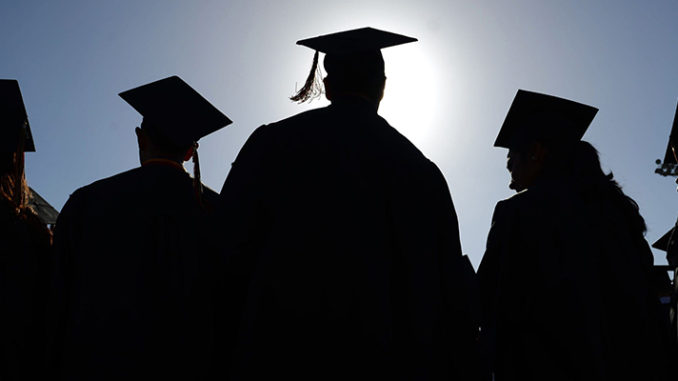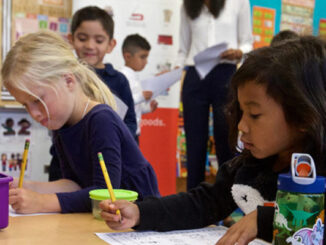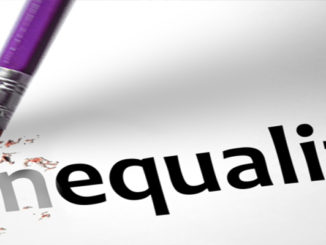
by Robert Balfanz and John Bridgeland
Graduation season is upon us, and millions of students across the United States will receive their high school diplomas this month. But though high school graduation rates have increased from 71.7percent in 2001 to 84.6 percent in 2017, that improvement doesn’t mean all students have benefitted equally. Graduation rates also are not the only measure of whether more students are actually ready for college and the increasing demands of work. We need to make sure more students of all backgrounds don their mortarboards on graduation day, but we should judge their schools not merely on how many students they graduate but on whether they are helping young people achieve the markers of success that show they are well-prepared for college and the challenges of the world beyond.
For 10 years, we have tracked how U.S. schools are responding to the high school dropout challenge. We are encouraged that African American and Latino students continue to drive increases in high school graduation rates, and African American students have doubled their enrollment in postsecondary education, while Latino student enrollment in higher education has more than doubled. For the first time, low-income students are enrolling in college at the same rates as their middle-income peers.
Yet, significant gaps between students of color, low-income students, and their white and higher-income peers remain at both the secondary and postsecondary levels. These gaps are in part driven by the poor performance of the remaining 2,000 or so low-graduation-rate high schools — including traditional neighborhood schools, alternative schools and charter schools — that are predominately attended by low-income and minority students and often located in the nation’s most distressed communities.
We also are alarmed that the nation’s more than 360,000 homeless high school students have the lowest graduation rates in the nation, with just 64 percent of them receiving their diplomas on time. Stigma and fear keep them hidden in plain sight and prevent them from accessing the supports they need to finish school.
As much as graduation rates overall are rising, it’s important to be clear about just what those diplomas indicate. Eighty-nine percent of high schools offer so-called credit-recovery courses students can take if they are in danger of failing to graduate on time, but the quality of these classes is highly uneven. A growing number of alternative schools are graduating students who may not be as prepared as their peers for the rigors of college coursework and the demands of the workplace. The graduation-rate accountability meted out in the No Child Left Behind Act helped fuel the rise in graduation rates between 2003 and 2010, but that progress is meaningless if it’s accomplished by watering down the quality of instruction and the standards for what constitutes progress.
To clarify these important issues, our latest report examined four measures of academic success in secondary schools over the past seven years: the percent of students scoring proficient on the 8th grade reading and math National Assessment of Educational Progress exams; the percentage of students receiving a 3 or higher on an Advanced Placement exam; and the percentage of students graduating from high school in four years.
From 2011 (when the common calculation for graduation rates was first required for all 50 states) through 2017, 68 percent of states have been able to improve both their graduation rates and at least two other measures of academic success in their secondary schools, while nearly a third have not.
California, Texas, Florida and New York, which together educate nearly one-third of all students in the United States, were able to improve three or all four measures of academic success. Only two states, Maine and Montana, had gains in high school graduation rates without demonstrating any progress on the other indicators of academic success. States including New Mexico, which is often stigmatized for having the lowest graduation rate in the nation, were able to show not only significant gains in graduation rates but also progress in AP performance and reading assessment scores.
These results are promising. They suggest that, by and large, high school graduation rates have increased not because the standards for academic preparedness have been watered down but because more students are leaving high school genuinely on track for college level academic work and more of them are graduating having completed college-level work while still in high school.
And beyond these traditional measures, new data show which high school achievements really indicate a student is ready to complete a bachelor’s degree. Analysis of a recent longitudinal study shows that three indicators — 94 percent attendance or higher during four years of high school; a grade point average of at least 2.7; and completing the required set of courses for admission to state university systems and taking an AP class — are highly predictive of earning a four-year college degree within seven years. The odds of achieving a bachelor’s degree increase from just 10 percent to 84 percent as the number of these college success indicators move from zero to three.
These numbers may sound abstract, but the education they represent, and the opportunities they open up to students, are not. Equal access to the American Dream depends on making sure every student has a chance not just to graduate but that their diplomas mean something.
Robert Balfanz is director of the Everyone Graduates Center at John Hopkins University.
John Bridgeland is chief executive of Civic and former director of the White House Domestic Policy Council.



